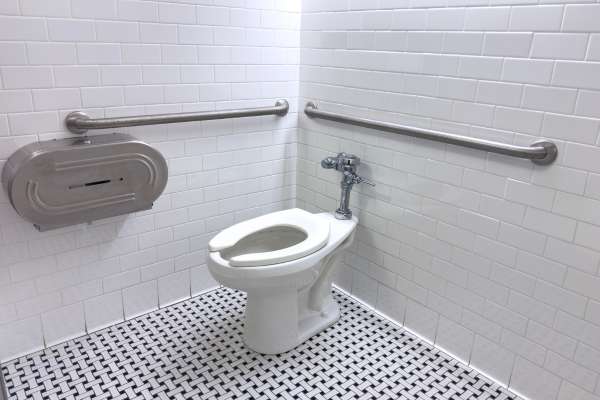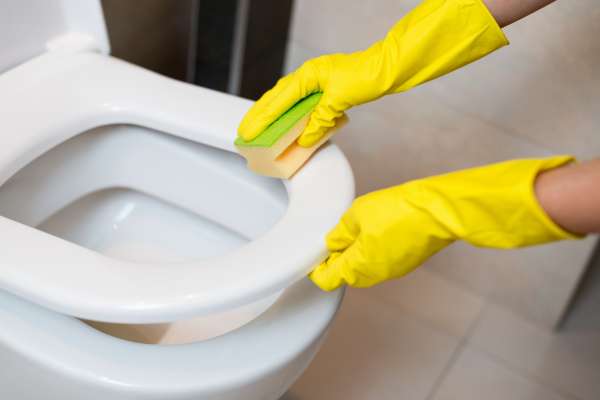Toilet seats, despite being an essential bathroom fixture, are often susceptible to discoloration and may gradually turn yellow over time. This phenomenon can be attributed to a variety of factors, such as poor maintenance practices, the composition of the toilet seat material, and the accumulation of mineral deposits. Understanding the reasons behind this common issue can help individuals proactively prevent or address yellowing toilet seats. In this article, we will delve into the various causes of yellowing toilet seats and explore potential solutions for maintaining a clean and hygienic bathroom environment.
What Causes Toilet Seats To Turn Yellow?
There are several factors that contribute to toilet seats turning yellow over time. One of the primary reasons is poor maintenance practices. Infrequent or improper cleaning allows dirt, bacteria, and sweat to accumulate on the surface of the seat, leading to discoloration. Additionally, the material composition of toilet seats can play a role in yellowing. Some cheaper plastic seats are more prone to discoloration compared to other materials like wood or high-quality plastic.
Reed More: What Is The Purpose Of Elevated Toilet Seats
Are Cleaning Products Responsible For Yellowing Seats?
While it might seem counterintuitive, certain cleaning products can actually contribute to the yellowing of toilet seats. Harsh chemicals and bleach-based cleaners can react with the plastic material, causing it to degrade and change color over time. It is important to use mild, non-abrasive cleaners specifically designed for toilets or follow manufacturer’s guidelines to avoid damaging or discoloring the seat.
The Role Of Material Composition
The type of material used in manufacturing the toilet seat plays a significant role in its propensity for yellowing. Plastic seats made from lower-quality materials are more susceptible to staining and discoloration compared to high-grade plastics or sturdy wooden seats. Porcelain and ceramic material, often used in higher-end toilet seats, tend to be more resistant to yellowing due to their smooth and non-porous nature.
The Impact Of Hard Water
Another culprit behind yellowing lavatory seats is hard water. Hard water contains high levels of minerals like calcium and magnesium that can build up on surfaces over time, creating limescale deposits. These deposits not only affect the functionality of your plumbing system but also contribute to a yellowish appearance on toilet seats. Regular cleaning and descaling with appropriate products can help combat this issue.
The Influence Of Cleaning Products
In addition to cleaning product misuse, specific types of cleaners may also cause yellowing of toilet seats. Toilet bowl cleaners that contain bleach or acidic ingredients may discolor the seat if they come into contact with it. It is essential to be mindful of the cleaning products used and ensure they are compatible with the material of the toilet seat. Opting for non-abrasive, pH-neutral cleaning solutions can help prevent yellowing over time.
Factors That Contribute To Yellowing
1. Exposure To Sunlight

Continuous exposure to sunlight can cause toilet seats to turn yellow over time. The ultraviolet (UV) rays in sunlight can degrade the color and composition of the seat material, leading to discoloration. To prevent this, it is recommended to keep bathroom windows covered or use curtains that block UV rays.
2. Humidity And Moisture
Bathrooms are often humid environments, especially after showers or baths. The constant exposure to moisture can contribute to the yellowing of toilet seats. Water droplets can accumulate on the surface of the seat, promoting bacterial growth and staining. Proper ventilation and regular wiping down of the seat can help reduce moisture buildup and prevent yellowing.
3. Age Of The Toilet Seat

As toilet seats age, they may naturally start to change color and develop a yellowish hue. The wear and tear over time can result in fading or discoloration, especially if the seat is made from lower-quality materials that are more prone to staining. Regularly replacing older toilet seats with newer ones made from better materials can help prevent yellowing.
4. Poor Ventilation
Insufficient airflow and poor ventilation in bathrooms can contribute to various issues, including the yellowing of toilet seats. Without proper ventilation, moisture gets trapped in the bathroom, creating an ideal environment for mold and mildew growth. These microorganisms release pigments that can cause stains and discoloration on toilet seats. Installing exhaust fans or improving air circulation within the bathroom can minimize this problem.
How To Prevent Yellowing
1. Regular Cleaning

One of the most effective ways to prevent yellowing of toilet seats is through regular cleaning. Use mild, non-abrasive cleaners that are specifically formulated for toilet seats. Avoid using harsh chemicals or abrasive scrubbers as they can damage the surface and make it more prone to staining. Regularly wiping down the seat with a clean cloth or sponge will help remove stains and prevent discoloration.
2. Reducing Hard Water Impact

Hard water, which contains high levels of minerals like calcium and magnesium, can leave unsightly stains on toilet seats over time. Using water softeners or installing a water filtration system can help reduce the impact of hard water on your toilet seat. Additionally, regularly removing mineral deposits using vinegar or lemon juice can help maintain the seat’s original color.
3. Adequate Ventilation

Proper ventilation is crucial in preventing yellowing of toilet seats due to moisture buildup in the bathroom. Ensure that your bathroom has adequate airflow by opening windows, using exhaust fans, or installing ventilation systems. Increased air circulation helps prevent condensation and reduces the risk of mold or mildew growth, which can contribute to discoloration.
4. Restoring A Yellowed Toilet Seat
If your toilet seat has already turned yellow, there are methods you can try to restore its original color. One approach is using hydrogen peroxide or bleach diluted with water to remove stains and discoloration. Apply the solution onto a cloth or sponge and gently scrub the affected areas of the seat until the yellowing fades away. Be cautious when using these substances and always follow safety instructions.
Removing Yellow Stains From Toilet Seats
1. Natural Cleaning Methods

If you notice yellow stains on your toilet seat, there are several natural cleaning methods you can try before resorting to commercial cleaners. One effective method is using a mixture of baking soda and vinegar. Start by sprinkling baking soda onto the stained areas and then pour vinegar over it. Allow the mixture to sit for a few minutes, then scrub the stains with a brush or sponge. Rinse thoroughly with water.
2. Commercial Cleaners

If natural methods do not remove the yellow stains from your toilet seat, you can explore commercial cleaners that are formulated specifically for this purpose. Look for products that contain bleach or hydrogen peroxide, as these ingredients are effective at breaking down stains and restoring the seat’s color.
Conclusion
Yellowing of toilet seats can be caused by various factors such as exposure to sunlight, humidity, age of the seat, and poor ventilation. To prevent yellowing, regular cleaning using natural methods or commercial cleaners can be effective, along with reducing the impact of hard water and ensuring adequate ventilation. In cases where yellow stains persist, restoring the toilet seat through thorough cleaning or replacement may be necessary. Taking proactive measures to prevent yellowing and promptly addressing any staining can help keep toilet seats looking clean and fresh.


